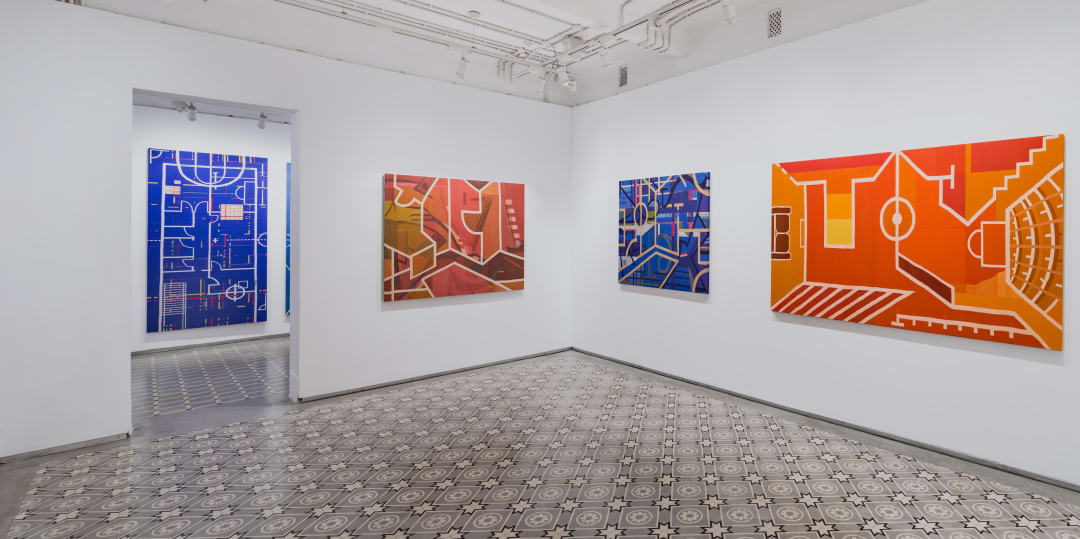Kanishka Raja (1969 – 2018) was born in Calcutta, lived and worked in New York and Kolkata. The circuitry of his work is grounded in the particular contingencies of this apposition. Ground Control sheds light on Raja’s multiform practice, underscoring a constant pursuit in plurality of thought, materials and processes that held influential positions in his life and work.
Having grown up in Calcutta, within a family steeped in textile design and weaving, a craft that needs exceptional control and skill, Raja was deeply influenced by complexities of weaving techniques and its underlying grid – a form that was a consistent source of exploration. Raja also played several field sports growing up, and remained intrigued with them, especially because these sports are defined by lines and rules that qualify these lines. Moreover, he was aware of his own fractured political history in South Asia where lines of control are real and palpable.
Process was an integral part of Raja’s practice.The works on view in the exhibition are woven by master weaver Dipak Haldar, in close collaboration with Raja, on double-weft handlooms in Phulia, Bengal. He was interested in their translation, the slippages in the transformation of form, from drawing to painting to scanning to weaving on the looms in India, and back on stretchers in his studio in Brooklyn as woven paintings – from art to craft and vice versa and from paper to image to thread. Since the works underwent several processes, some fundamentally made in Raja’s studio and others in the weavers’ pit looms, Ground Control explores aspects of control as well as its absence.Through an active employment of ornamentation as a tool and color as a weapon, Raja’s interest in ornamentation and pattern is also visible in the exhibition.
At the core of the exhibition is one of Raja’s series of pavilions, which he envisioned in drawings, notes, sketches and digital renditions; and is influenced by Durga Puja pandals that appear every year in the city, bringing together art, craft, public and private space, music, installation and interactivity. He was also immersed in a wide range of music, that was as much about control to him, as it was about improvisation. With the musician Mike Ladd, a long-standing collaborator, he created soundscapes for these pandals from deeply layered sonic sources.
Acutely erudite and conversant in literature, politics, music, philosophy and history, Raja was an artist who could lead the viewer to enter his work from different points of view and emerge from it with several kaleidoscopic visions of how we may understand our world. Ground Control attempts to converge several strands of enquiry running concurrently through Raja’s multi-dimensional practice.
Experimenter would like to thank and acknowledge the immense contribution of Estate of Kanishka Raja, Juli Raja, Naeem Mohaiemen, Murtaza Vali, Mike Ladd, Ani Dasgupta, Dipak Haldar, Sukumar Basak, Dilip and Nandita Raja.

